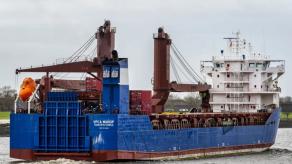A noteworthy story has been published the other day by the Ukrainian military about how a group of soldiers managed to take down a Shahed-131 drone of iranian manufacture. It happened "a bit more than a month ago", most likely, overnight November 9.
The details were told by the press center of the Regional Command "East" of the Territorial Defense Forces of the Armed Forces of Ukraine.
Read more: Shahed Drones are Still Dangerous Even After All of Them Are Shot by Air Defense

There are a few details to take note of. First, the conditions in which Ukrainian soldiers managed to spot and shoot these two drones down.
"It was cloudy that night. We noticed the Shaheds by the sound at first, then we saw them through a thermal imager," says the commander of an air defense platoon going by the nickname Artist.
That thermal imager made the difference in this situation: one of the soldiers was watching over the kamikaze drone through the device and directed the fire of his comrades with a laser pointer. Ukrainian servicemen had their heavy DShK (12.7mm) and lighter RPK (7.62mm) machine guns to work with.
Normally, it's up to missile systems to detect and take down Shaheds at night, as practice shows, large-caliber machine guns and small arms are mostly effective during the daytime because this method requires "visual binding", as follows from the commentary by a top officer of the Ukrainian Air Force. However, in our case, the visual contact was replaced by "thermal detection".

Secondly, we should note the experience gained by individual soldiers throughout all these times they were assigned to shoot down Shahed-type drones. In particular, Artist shared some features he noticed about the behavior of Shahed loitering munitions:
"Before the strike, a Shahed usually slows down and starts to descend. One kilometer before the target, it approaches at a very low altitude, about 100-120 meters. It hangs in the air above the [target's] location and dives straight downward," he said. Not only the principles of Shahed's course of action itself, but the air defense serviceman has also learned a thing about how russians use them:
"When we worked on the [first] drone, we could see it hit. Its wing was torn apart, and it fell not reaching the target. The second one came ten minutes after. It was predictable: usually, they go in groups of two or three. It was approaching via the same route, and we tore it apart in the same way."

As Defense Express earlier explained, the Ukrainian air defense system relies not only on Soviet or modern western missile systems but also on a network of so-called "mobile firing groups" of air defense, namely soldiers with small arms, machine guns and MANPADS missiles in a designated area, ready to move out when ordered. It is a tactic that uses long-range radar detection and the individual skill of soldiers spread across the country to cover as much of the vast territory of Ukraine with air defense capabilities.
Read more: Ukrianians Apply 'Mobile Firing Groups' Tactics to Create Effective Air Defense














